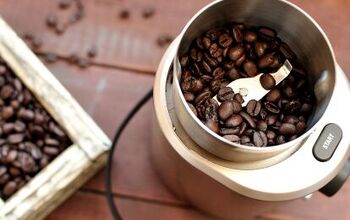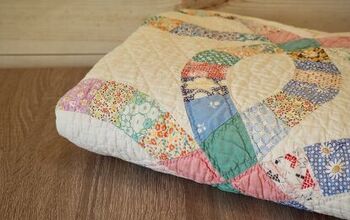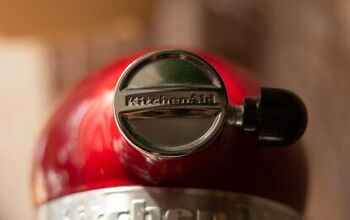Why Is Fine China So Expensive? (Find Out Now!)

When you think of fine china, your first thought may lead you to your grandparents’ old china cabinet that sits in the corner of their dining room and is rarely opened. That said, fine chinaware is still extremely popular in households across the country, which also means fine china pieces are still quite expensive, too.
When it comes to fine china and bone china, there are a handful of factors that contribute to the high prices associated with the items. These can be boiled down to their value and luxury status, the quality of the raw materials used to make them, their attractive and unique appearances, the difficult manufacturing process, and the variations between brands.
That’s what we’re going to be talking about in this article. That way, you can better understand what goes behind fine china’s high price tag. First, let’s talk about what makes fine china different from your average dish ware.
Regular Dinnerware vs. Fine China
Fine china is made from feldspar, ball clay, quartz, and kaolin—a type of white clay. Manufacturers also make regular porcelain dinnerware from these materials, too. The key difference is craters will fire these pieces in a kiln at a way higher temperature—usually about 1,455 degrees Fahrenheit—which makes it thicker, harder, and more durable.
While fine china is more fragile than your every-day dishes, they are still more expensive due to their overall value, the quality of the materials, and the complicated manufacturing process. The final cost is also contingent on the manufacturer of the products. Other than porcelain, manufacturers can make basic dish ware from a variety of materials, all of which are much easier to craft. More on that below.
Fine China Cost Factors
Antique Value
Fine china is known to be a collector’s item, which automatically makes it more valuable, and thus, more expensive. Many of these pieces will continue to get more and more valuable over time, which means you can sell them for a great deal of money after many years. That said, as long as you take care of them, they are often worth that initial investment.
Quality Materials
Fine china will be more expensive than many types of dinnerware, especially when compared to those made from glazed earthenware, stoneware, glass, wood, metal, or any other material. All these materials are much easier to work with and won’t cost as much to create, which will impact the overall cost of the product themselves.
Manufacturing Process
First, the materials used to make the items are finely ground, cleaned, formed into whatever mold, and fired. The pieces are then put in a kiln at a temperature of about 1,200 degrees Fahrenheit, which is lower than common porcelain pieces. They’re softer than standard porcelain pieces, which makes them more delicate and harder to handle.
Fine China Brands
All manufacturers mark their fine china with enamels, back stamps, or other marks. These indicate who made it, which will impact the overall cost. Many manufacturers have established reputations based on their unique designs and the quality of their work, so they can charge higher prices for their goods. Plus, the printing materials that manufacturers use to make these stamps will be factored into the overall cost of the product.
Bone China Cost Factors
Bone china is among the most expensive types of fine china due to its luxury status, expensive raw materials, labor-intensive manufacturing process, and unique appearance. Their cost factors are pretty much the same as regular fine china, but the process is a bit different and more complicated, so it’s worth going over.
Luxury Status
Bone china is considered a luxury item, which means it’s very valuable. Most people use them on special occasions, but you actually can use them more often due to its resilience and durability. Bone china is a statement piece and will add a sense of elegance to your home.
Expensive Raw Materials
Porcelain is already one of the more expensive materials that manufacturers use to make dishware. In addition to porcelain, bone china contains bone ash, which is an even more costly raw material. Most products will contain between 25% and 45% of bone ash in the mixture. As a rule of thumb, the more bone ash used, the more expensive the item.
Creation Process
Bone china is even more difficult to create than other types of fine china. Manufacturers have to artificially mix the ingredients. They can’t use any of the raw materials unless they successfully remove all the contaminants. Plus, creators will fire bone china twice in the kiln at a high temperature, which will drive the overall price up.
The first firing will shrink the item down. The second firing happens after glazing the item. Its purpose is to melt the glaze into the piece. Using the kiln twice in and of itself is more expensive. More importantly, it leaves more room for error. In fact, about 20% of all pieces crack during the first firing phase. Since creating bone chinaware is a riskier process, it costs more overall.
Manufacturers will fire bone china at a slightly lower temperature than regular fine china due to the addition of the bone ash. This also makes the process more complicated because creators have to have the temperature high enough to be effective and low enough to keep the bone ash in good condition.
Unique Appearance
Bone china is typically thinner and smoother than any other type of dishware while still remaining quite durable. It also gives the dishware a creamier, off-white color that is opaquer while still holding on to a translucency quality. All this makes it more visually appealing than regular porcelain.
Manufacturer Reputation
As with regular fine china, branding matters. Depending on whose bone china you purchase, you will see a fluctuation in prices. The most expensive piece of bone china ever sold was a vase known as Joseon Baekje. It sold for $4.2 million!
Taking Care of Fine China
Fine china is much more fragile than other types of dishware, which may make you nervous when it comes to using and cleaning it. However, you don’t have to worry too much. These products are much more resilient than you may think.
As long as your dishes don’t have any gold trim or metal accents, you should be able to put your chinaware in the microwave, dishwasher, and maybe even the oven. That said, even some “dishwasher-safe” pieces can chip around the edges during a wash cycle, so you may want to err on the side of caution. If they do have these accents, carefully wash the items by hand with a mild soap only.
How to Tell if Bone China is Real
There are a couple of different ways to test the authenticity of your chinaware to make sure it’s real bone china. The easiest thing to do is check the trademark and manufacturer name that the creator stamps on the bottom of the piece. However, some older pieces may be harder to decipher.
If this is the case, hold the item up to the light and put your hand behind it. Real bone china is somewhat translucent, so light can pass through it. If you can see the shadow of your hand moving behind it, it’s real!
Related Questions
When was fine china first produced?
Fine china first came about during the early 8th century of the Tang dynasty (618-907). This was during the golden age of this dynasty.
What are all the different types of dinnerware?
There are many different types of dinnerware that you can bring to the table. These include porcelain, china, bone china, earthenware, stoneware, melamine, vitrified glass, wood, and more.
What can I do with old fine china?
If you’re looking to get rid of fine china, the best thing to do is sell it. However, if you don’t care for the profit and don’t have the space for it, you can donate it to consignment shops or donation centers, pass it down to friends and family, or recycle them.
So, is Fine China Worth It?
Fine china, and more specifically bone china, is definitely a luxury item rather than an average purchase. This is one of the reasons people pay much more for them when compared to other types of dishware. Many people collect items and pass them down from generation to generation, and over time, many pieces increase in value. Whether you should purchase some for your home or not is entirely up to you!

I am a copywriter and editor based in the Las Vegas area with nearly a decade of experience under my belt writing landing pages, cost guides, blog posts, newsletters, case studies, and social media content. I have a degree in Strategic Communication and experience working in both the account and creative spheres. My goal is to always be discovering new interests and bettering myself as a writer and editor along the way.
More by Kerry Souder



























